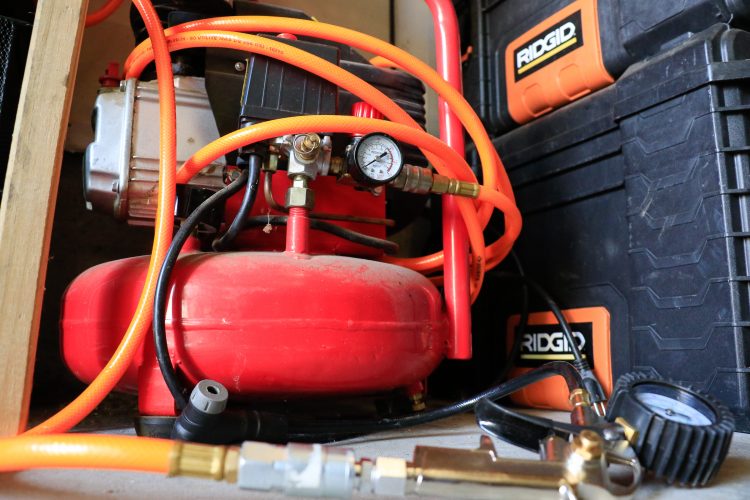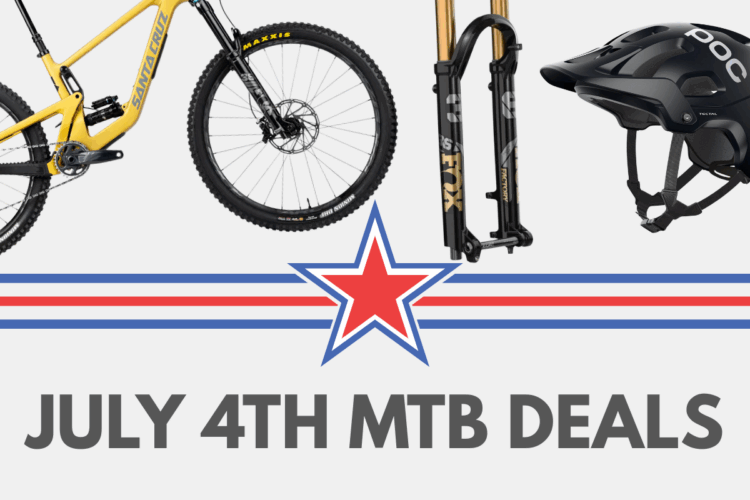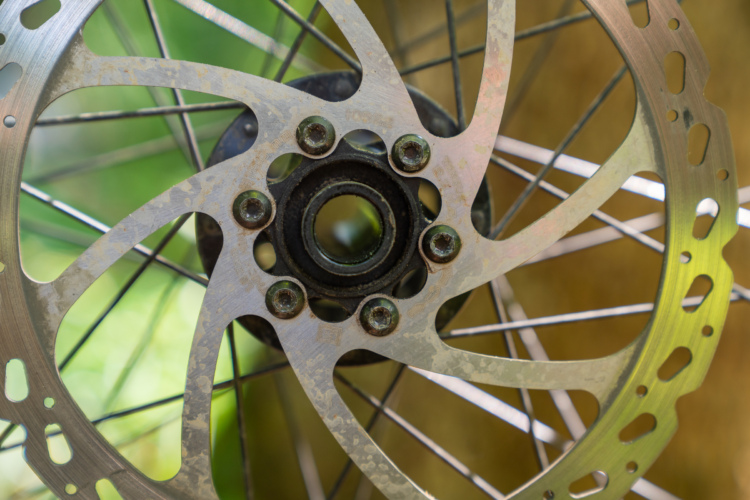If you were recently gifted or purchased a mountain bike tool kit you’ll find heaps of DIY fixes on our repairs page. We hope to help readers fulfill that New Year’s resolution of learning to mend the bike bits at home. Starter tool kits typically contain a number of sturdy instruments that will last longer than you will, and also some cheap ones that can do more harm than good. Let’s take a look at which ones are usually in for the long haul, which tools go in the recycling bin, and which ones you might want to add to the collection.
Which of these tools are keepers?

If your tool kit came with a cassette lockring tool and chain whip for installing and removing the cassette it’s likely going to last longer than your bike and may outlast your body. Those are simple tools that rarely strip or wear out, and even the cheap versions typically work just fine.
Looking at the red-handled kit above from JensonUSA as an example, there are a few other pieces that should outlast the latches and hinges on that plastic box they’re housed in. The chain-breaker should be fine for several seasons, the Allen keys are definitely going to get most jobs done, and the chain-wear indicator, screwdriver, pedal wrench, chainring nut wrench, and the BSA bottom bracket tool may be around for several years before they wear out.
Keep
- Chain breaker
- Allen keys (maybe upgrade for nicer handles)
- Chain wear indicator
- Cassette lockring tool
- Chain whip
- Screwdriver
- Chainring nut wrench
- Bottom bracket tool
Chuck*
- Hub cone spanners
- Cartridge BB tool
- Crank puller
- Headset spanners
- Freewheel bit
- Pedal wrench
*or keep in case you work on older bikes
Add/upgrade
- Cable / housing cutter
- Spoke wrenches
- Sharp pick
- Needle nose pliers
- Torx tool / bits
- Mill file
- Pipe cutter
- Dead blow hammer
There are also tools in this kit that will last a long while, but there’s a strong chance they will never be used on a modern mountain bike. Unless you run Shimano hubs, or one of the few other brands that use loose ball bearings, the seven different hub cone spanners will just add dead weight to the toolbox. The cartridge BB tool is also rather antiquated and will sit fallow alongside the crank-puller, headset spanners, and the freewheel bit unless you’re working on bikes that are fifteen or more years old. Those instruments will all stick around — forever collecting dust.
High on the not keepers list are the flimsy tire levers that will snap in short order and leave you hunting for something better and the clever chain cleaning contraption. Those things work great for a minute, and then they end up in the landfill while you go back to cleaning the chain by hand. The pedal wrench likely could also be donated to a local commuter shop since most MTB pedals can be swapped with a 6 or 8mm Allen key.

Which of these tools could be replaced with better quality options?
Cable and housing cutters in a lot of home mechanic kits are sub-quality at best. Clean cable and housing cuts are crucial to dialing in proper shifting, making this a tool worth investing in. If and when this tool wears out or becomes baggy you’ll want to replace it with something sturdy. Park Tool, Pedros, Knipex, Pro and several other brands have great options that will last a long while.
Also, the spoke wrenches in these kits are oftentimes worth replacing. Spoke nipples are made of aluminum or sometimes brass, and the tool is steel, so a poor tool fit can quickly cause damage to the nipples. High-quality spoke wrenches like those from Abby or Unior, Park, or DT Swiss aren’t wildly expensive, and they can save some messy headaches.

What could I add to make this starter kit more comprehensive?
The first tool I add to any kit is of the dental variety. It’s a rare day when I work on a bike and don’t need a sharp pick for something. The most common uses are guiding cables through frames and opening up cable and hose ends after they’ve been cut. Picks are also handy for removing and replacing bearing seals and guiding bolts into precarious places. A solid set of needle nose pliers can solve an equal number of problems, and their single tines can be used in situations where the pick is too sharp or small. Sharp scissors fit under this guiding and prodding umbrella, and they can be super useful when you need to open a box of fresh components or wrap tape around something.
For more bike-specific instruments, an assortment of Torx wrenches can be helpful depending on the brand of components you have. Most SRAM clamps use a T25 wrench, and TRP brakes have T10 bolt heads to close their bleed ports. A tool or appropriately sized piece of wood is clutch for spreading pistons apart in the brake caliper when it’s time for new pads, and a rotor truing tool will eventually be useful. Make sure to keep the truing tool in a sealed bag so it doesn’t collect any oil that contaminates the disc when you true it.


Larger tools come next, where I would throw a dead blow hammer, a mill file, and a broad-spanning crescent wrench to the box. Spindles and seals occasionally become stuck with soil and a little tap from a hammer will do wonders to free them. The mill file is great for cleaning up cut handlebars or steerer tubes, and a top-quality crescent wrench will take care of most spanner needs, like the cylinders that hold brake hoses in place.
From there the list of potential tool purchases is lengthy and expensive. You can purchase facing bits for bottom brackets and headsets and frame straighteners if you want to have all the bike shop essentials. A wheel truing stand and a bearing press will likely make sense at some point depending on your level of comfort with those repairs. Also, a pipe cutter and de-bur tool like those pictured above make for clean cuts that won’t catch on or damage anything they encounter.
Your turn! What tools do you add to the average starter tool chest to make it your own? Have you made any tools that you’re particularly proud of? Please share them in the comments below.





















9 Comments
Jan 12, 2022
I’d also argue that cheap Allen keys should go in the bin immediately as they’re usually not to tolerance and can quite quickly round out bolts. Just my 0.02
Jan 13, 2022
Jan 12, 2022
Jan 13, 2022
Jan 14, 2022
Jan 12, 2022
I actually like my "clever chain cleaning contraption," the brushes do a faster, better job than I can do by hand, and I'll happily replace it if it ever wears out.
I'd add large & small torque wrenches long before a pipe cutter.
Jan 12, 2022
Jan 12, 2022
Jan 12, 2022